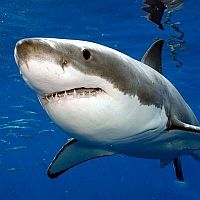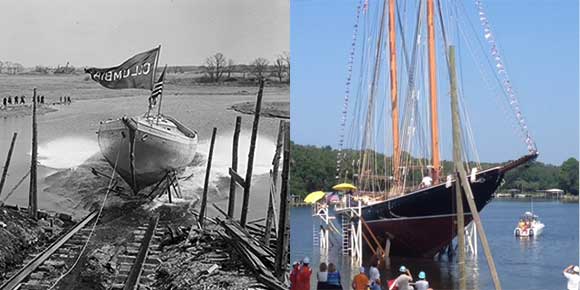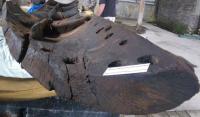 A waka, a 600 year voyaging canoe, was recently found on the New Zealand’s South Island’s West Coast. The results of a study by University of Auckland researchers appeared recently in the US Proceedings of the National Academy of Sciences. The waka, built in New Zealand of matai, an indigenous pine, has direct ties by design and distinctive carvings to the peoples of Eastern Polynesia. Carbon dating showed that the vessel was last caulked with bark around 1400. As reported in Stuff.co.nz: The newly described canoe seems to represent a mix of that ancestral plank technology and an adaptation to the new resources on New Zealand, since the boat has some big, hollowed-out portions but also sophisticated internal ribs, Johns and colleagues wrote.
A waka, a 600 year voyaging canoe, was recently found on the New Zealand’s South Island’s West Coast. The results of a study by University of Auckland researchers appeared recently in the US Proceedings of the National Academy of Sciences. The waka, built in New Zealand of matai, an indigenous pine, has direct ties by design and distinctive carvings to the peoples of Eastern Polynesia. Carbon dating showed that the vessel was last caulked with bark around 1400. As reported in Stuff.co.nz: The newly described canoe seems to represent a mix of that ancestral plank technology and an adaptation to the new resources on New Zealand, since the boat has some big, hollowed-out portions but also sophisticated internal ribs, Johns and colleagues wrote.
The turtle carving on the boat also seems to link back to the settlers’ homeland. Turtle designs are rare in pre-European carvings in New Zealand, but widespread in Polynesia, where turtles were important in mythology and could represent humans or even gods in artwork…. The canoe shares some design elements with a canoe found about 30 years ago on Huahine in the Society Islands.


 In September, we posted about the discovery of one of two missing ships from the
In September, we posted about the discovery of one of two missing ships from the  Just over a year ago, I was surprised — shocked might be a better word — to hear of a play about a shipyard.
Just over a year ago, I was surprised — shocked might be a better word — to hear of a play about a shipyard.  In 2011, we
In 2011, we  The oceans could indeed be older than the sun. A team of scientists from the University of Michigan now believe that up to half the water on our planet is older than the sun. Earlier theories had assumed that interstellar ice particles evaporated with the formation of Earth and reformed later to create the oceans. Now, these scientists have calculated that if the old theory was valid, that the amount of deuterium found in terrestrial water would be far lower than it is. Deuterium is an isotope of hydrogen that has an extra neutron attached. The only explanation they have found for the higher levels of deuterium observed is if more of the interstellar ice particles helped form the world’s oceans directly. They calculate that as much as 50% of the earth’s water might come from these ice particles, which have higher levels of deuterium. This might suggest that water on distant planets is far more common than previously thought.
The oceans could indeed be older than the sun. A team of scientists from the University of Michigan now believe that up to half the water on our planet is older than the sun. Earlier theories had assumed that interstellar ice particles evaporated with the formation of Earth and reformed later to create the oceans. Now, these scientists have calculated that if the old theory was valid, that the amount of deuterium found in terrestrial water would be far lower than it is. Deuterium is an isotope of hydrogen that has an extra neutron attached. The only explanation they have found for the higher levels of deuterium observed is if more of the interstellar ice particles helped form the world’s oceans directly. They calculate that as much as 50% of the earth’s water might come from these ice particles, which have higher levels of deuterium. This might suggest that water on distant planets is far more common than previously thought.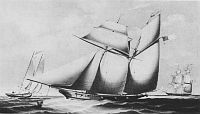 The schooner yacht
The schooner yacht 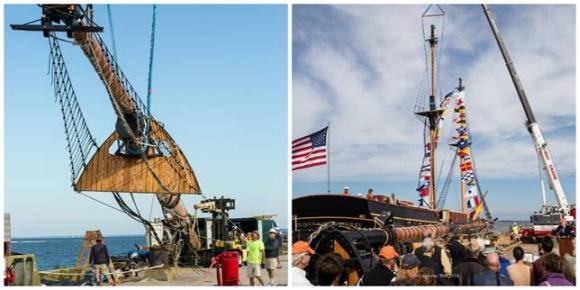 The main mast on the
The main mast on the 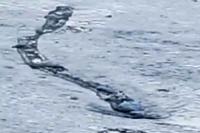 Two years ago
Two years ago 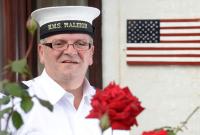
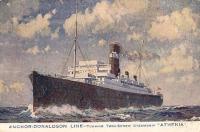
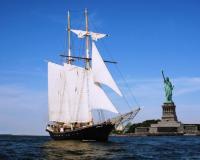 The topsail schooner
The topsail schooner 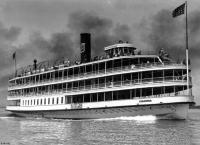 The passenger steamer
The passenger steamer 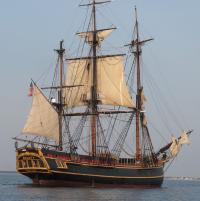 Award winning film maker
Award winning film maker  On this the official “
On this the official “ Odyssey Marine Exploration Inc.
Odyssey Marine Exploration Inc.